I normally use an Arduino for my projects because it has 5V inputs and outputs and has 5V Vin so that makes life very easy when interfacing with 5V components. For this project I want to use a Raspberry Pi because I want to hook it up to a display. The Pi is powered by 5V so that's easy enough. It has 3.3V I/O pins however and the devices I want to interface with are 5V.
I have a device with a 5V input pin, which needs to be driven to 5V. The device has a 5V output pin, which the device drives to 5V when it outputs.
I've converted bidirectionally between 5V and 3.3V devices before, but that was with a logic level shifter that was active LOW. The circuit is the typical one with a transistor and a diode and two pull up resistors. This application requires active HIGH. This project thankfully does not require bidirectional I/O.
For the 5V to 3.3V direction, a crude voltage divider will work.
For the 3.3V to 5V direction however, I don't know of an easy solution. I did some searching and there seem to be boost-converters (DC-DC boost converters) but to build them from discrete components I need to build a PWM circuit to drive the switching.
I was just wondering if there was a simplier way to achieve this, with complexity comparable to the active low logic level shifter.

